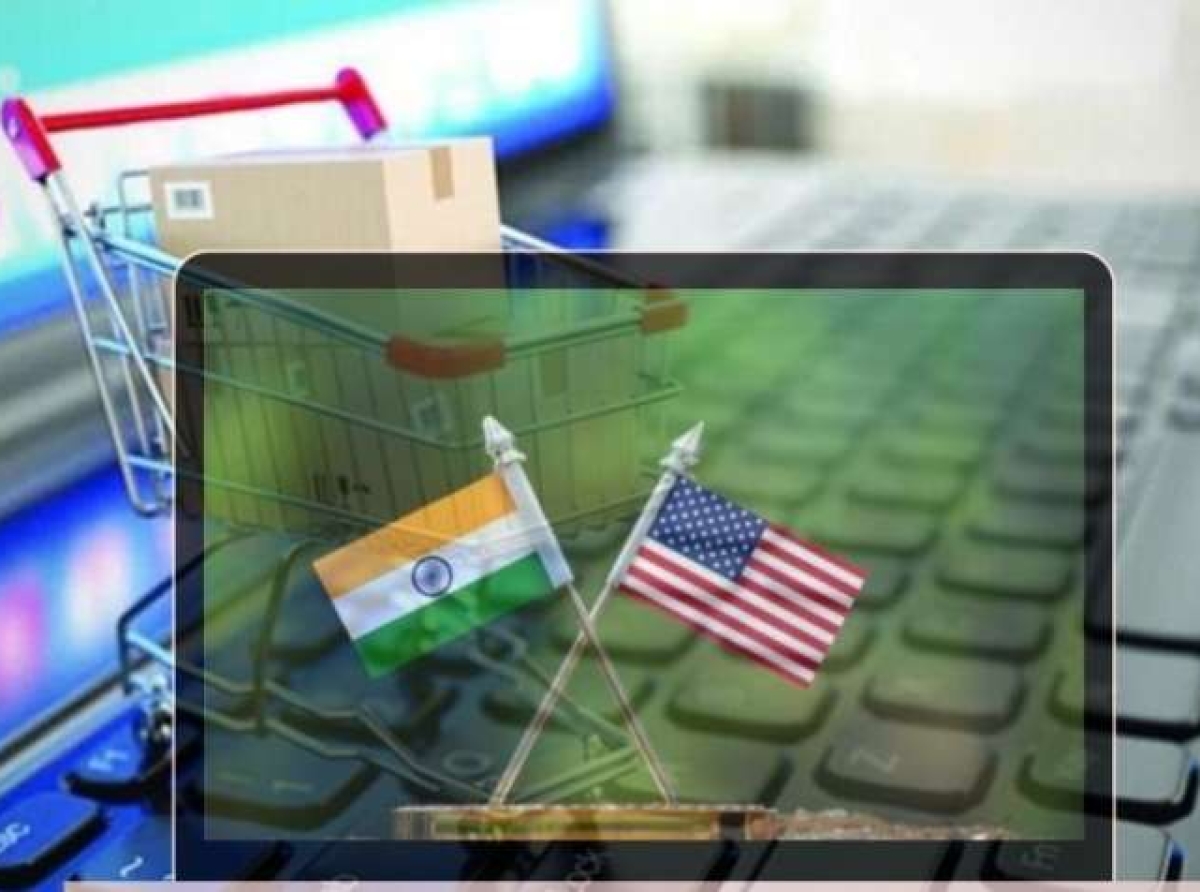As US presses India for full e-commerce access a trade fault line emerges

As trade relations between the US and India continue to evolve, a critical fault line has emerged in the digital commerce space. Washington is pressing New Delhi to loosen its restrictions on foreign e-commerce companies—a move it sees as essential for fair trade, but India views this as a potential threat to its domestic economic fabric.
The resulting tension underscores not just a trade dispute but a broader clash of economic ideologies.
The crux of the conflict
At the center of the dispute is India’s e-commerce policy, which permits foreign players like Amazon and Flipkart (majority-owned by Walmart) to operate only as online marketplaces.
These platforms are forbidden from holding inventory or directly selling goods to consumers. In contrast, Indian companies can operate more freely, engaging in both marketplace and inventory-led models.
To the US, this asymmetry represents a "non-tariff barrier" that unfairly restricts American firms.
As trade talks progress, the US is making a strong case that easing these restrictions must be part of any future tariff agreements.
India’s rationale, protecting its economic ecosystem
India’s cautious stance is driven by a range of priorities
The first involves safeguarding domestic businesses. India’s e-commerce policy aims to protect its extensive network of small and medium-sized enterprises (SMEs) and traditional retailers. These businesses form the backbone of India’s retail sector, and policymakers fear that unrestricted access to deep-pocketed foreign companies could drive them out of business.
The government's “Self-Reliant India” initiative champions domestic manufacturing and consumption. By limiting the direct involvement of foreign players, India seeks to nurture homegrown industries and encourage the use of local products.
Concerns over data security and privacy also loom large. Restricting foreign companies’ ability to control inventory and sales reduces their access to sensitive consumer data, giving India greater oversight and regulatory control.
Predatory pricing is another bugbear. India fears that global e-commerce giants could use their financial muscle to undercut prices and monopolize the market, endangering smaller players. The marketplace-only model is designed to preserve a fairer competitive environment.
However, the US is advocating for sweeping changes as a condition for a broader trade agreement. It wants removal of marketplace-only restrictions. This would enable American companies to own inventory and sell directly to Indian consumers, mimicking their operational models elsewhere.
The US is also urging India to ease foreign direct investment rules in the multi-brand retail segment, enabling firms to set up physical retail and logistics networks.
American officials argue that such steps would not only benefit their companies but also boost consumer choice, reduce prices, and inject innovation into India’s retail landscape.
What happens if India concedes?
Should India choose to relax its e-commerce restrictions, the consequences would be profound.
While it lead to an investment boom as US companies could bring in substantial FDI, strengthening infrastructure and logistics. Consumer benefits will increase with more choices, and competitive prices and better service standards could emerge, similar to the telecom sector's transformation.
Also, greater competition could push domestic firms to innovate and modernize. And if foreign platforms actively promote Indian products globally, sectors like handicrafts and apparel could see export gains.
However on the down side, retail sector disruption will increase as small retailers may find it hard to compete, risking widespread job losses. According to CAIT, over 70 million small businesses could be affected. Foreign dependence will increase as dominance by global firms might reduce India’s control over its retail ecosystem.
With broader access, foreign firms might gain control over more granular consumer data, raising red flags.
Moreover, even with regulation, deep discounts and aggressive pricing by global players could stifle local competition.
Finding the middle ground
India’s path forward will likely be one of compromise, balancing openness with protectionism. Possible measures include:
- Phased implementation: Gradual changes could give local firms time to adapt.
- Data and pricing regulations: Stronger laws on data localization and fair competition may be introduced.
- Support for SMEs: Financial incentives and digital infrastructure support could level the playing field.
- Clear regulatory definitions: Clarifying what constitutes a marketplace or inventory-led model can enhance oversight.
Thus, the ongoing e-commerce standoff between India and the US is more than a trade negotiation—it reflects broader questions about economic sovereignty, globalization, and the digital future. As the two nations strive to reconcile their visions, the decisions made will ripple across global markets, setting a precedent for how emerging economies engage with global tech giants.
India's challenge lies in crafting policies that welcome innovation and investment while preserving the spirit of self-reliance and protecting millions of livelihoods. Whether this will lead to a breakthrough or further stalemate remains to be seen—but one thing is certain: the stakes are high, and the world is watching.
Latest Publications

































